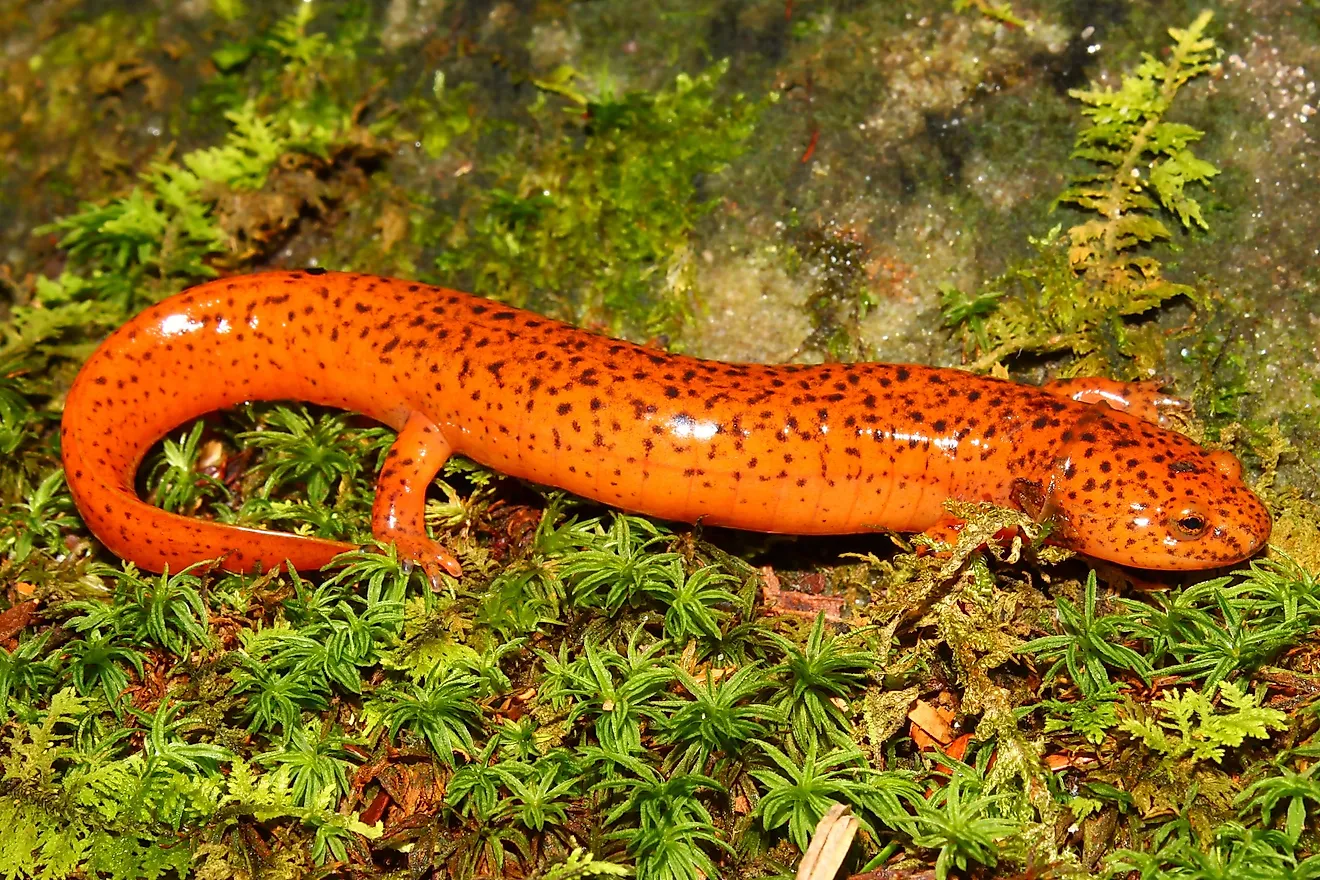What Is The West Virginia State Amphibian?

West Virginia is a US state that has been nicknamed the “Mountain State” because it is located within the Appalachian Mountains region. West Virginia has designated multiple animals as state symbols including the state animal (black bear), state butterfly (monarch butterfly), state fish (brook trout), state insect (honey bee), state bird (northern cardinal), and state reptile (timber rattlesnake). The official state amphibian is the northern red salamander.
Designating the State Amphibian
The northern red salamander is scientifically known as the Pseudotriton ruber. This frog belongs to the Plethodontidae endemic family. It was designated the state amphibian in 2015 following the introduction of the idea to the House of Delegates by eighth graders of Romney Middle School. According to these students, the northern red salamander had a color similar to West Virginia’s autumn colors.
Why The Northern Red Salamander?
The northern red salamanders have orange bodies. According to the students, the red on the amphibian’s body would represent West Virginia’s fall sugar maple trees. On the other hand, the black spots on its body symbolized coal mining which is a major economic activity in the state. In addition, the northern red salamanders possess five toes on each hind foot and four toes on each of the front feet which could represent the fifty-five counties and eight rivers of West Virginia.
Physical Features
Northern red salamanders are about 10 to 18 cm long. They have no lungs just like the other members of the Plethodontidae family which is a group of lungless salamanders. Consequently, they breathe through their skin. The northern red salamanders have projectile tongues that draw their foods as swiftly as in milliseconds. They release a toxic substance which is a protective measure against their predators. Another protective mechanism used by the northern red salamanders is their ability to curl their bodies into a C-shape. The C-shape protects the heads of the salamanders from harm. These predators include raccoons, birds, and skunks.
Feeding
Northern red salamanders feed on small invertebrates such as arachnids, worms, small insects and sometimes smaller salamanders. The diversified food options for the red salamanders is due to their wide scavenging habitats that range from wet to dry seasons. Moreover, in conservation sites such as Smithsonian's National Zoo, the amphibians feed on crickets, isopods, fruit flies, black worms, bean beetles, and springtails.
Habitat
Northern red salamanders live within the region from the Northern New York to the Gulf Coast. Its habitat is 1,500 feet above sea level. They occupy aquatic as well as terrestrial areas. Environments inhabited by the northern red salamanders are characterized by cold temperatures, clear streams, wooded areas, and rocky places. One will find these salamanders in most of the rural areas of West Virginia.
Reproduction
Northern red salamanders reproduce in spring. The process involves the male salamander rubbing its snout on the head, chin, cheeks, and snout of the female partner. The females and males then engage in a “walk” while in a straddling position until mating takes place. Male salamanders lay deposits of spermatophores on their female counterparts. Females may store the male sperms for a long period resulting in the continuous laying of eggs long after the mating process. They lay 30 to 130 eggs on submerged rocks that hatch in early winter. The nests are well-hidden from predators increasing the survival of the young salamanders.
Conservation Status
According to the IUCN Red List, the northern red salamanders are categorized under “Least Concern.” They are a large population of amphibians which still have a chance of surviving into the future.











